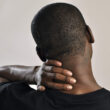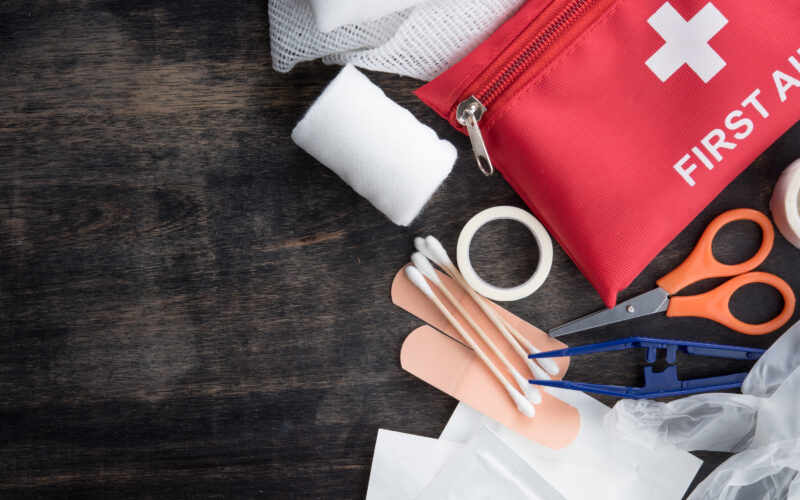When it comes to first aid, you should take a cue from the boy scouts and always be prepared. Here, Dr. Elizabeth Rocco, a family physician in Lawrence, Mass., shares her first-aid tricks for five common ailments:
1. Cuts and Scrapes
A cut may not elicit the same wail it did when you were a kid, but it’s still scary seeing blood. If it happens, get to a sink and wash the area with soap and running water to remove debris and bacteria. Apply pressure to stop the bleeding, then dab on antibiotic cream and cover the cut with a bandage so it stays moist; contrary to popular belief, letting a cut dry out slows the healing process and can even lead to a scar. Apply the ointment and change the bandage daily.
Visit the ER If: The bleeding doesn’t stop after 10 minutes, the cut is gaping or you see red streaks around the area pointing to your heart, which signals a serious infection, says Rocco.
2. Bad Sunburns
If you return from the beach looking like you’re ready to be dipped in drawn butter, cool your lobsterlike skin with a damp washcloth and a cool shower or bath. Unfortunately, you can’t stop skin from peeling, but hydrocortisone cream can reduce any swelling. Also apply aloe gel or lotion to keep skin hydrated. And next time, don’t forget to reapply sunscreen every two hours!
Visit the ER If: You notice any signs of heatstroke, including trouble breathing, high fever, confusion, racing pulse or vomiting.
3. Bee or Wasp Stings
Got a red, swollen bug bite that hurts and itches? You can bet your bonnet it’s from a bee or wasp. If you see a stinger, scrape across your skin with a credit card to remove it in one piece, then clean the skin and apply antibiotic ointment. Ice the area to reduce swelling and numb the pain, then pop both an antihistamine (for swelling and itching) and ibuprofen (for pain relief).
Visit the ER If: You think you’re having an allergic reaction. Symptoms include trouble breathing, feeling faint and a rash or itching over your entire body.
4. Poison Ivy, Oak or Sumac
Nothing ruins a hike through the woods like breaking out in a rash, and the one caused by these plants is a doozy: Skin gets red and swells, then develops small, itchy bumps or blisters. Wash your skin with mild soap as soon as possible, then grab some oatmeal, which has anti-itch and soothing properties. “Fill an old pantyhose leg with oats and soak with it in cool water,” says Rocco. When you get out, dab on calamine lotion.
Visit the ER If: You’re having trouble breathing or have a fever. See your doctor if the rash is swollen or oozing, which may signal an infection.
5. Food Poisoning
Summer picnics are prime time for food poisoning; bacteria can flourish in food left in the heat for too long. If you develop the symptoms — diarrhea, nausea, vomiting – “drink lots of clear, noncaffeinated liquids, including sports drinks, which replace electrolytes,” says Rocco. Also take an over-the-counter stomach remedy containing bismuth subsalicylate. It fights inflammation and may inhibit bacteria. Then, get plenty of rest (as if there were anything else you could do!).
Visit the ER If: You can’t keep fluids down or are already dehydrated. (Your mouth is dry, your urine is dark, you feel dizzy or you have a rapid heartbeat).






